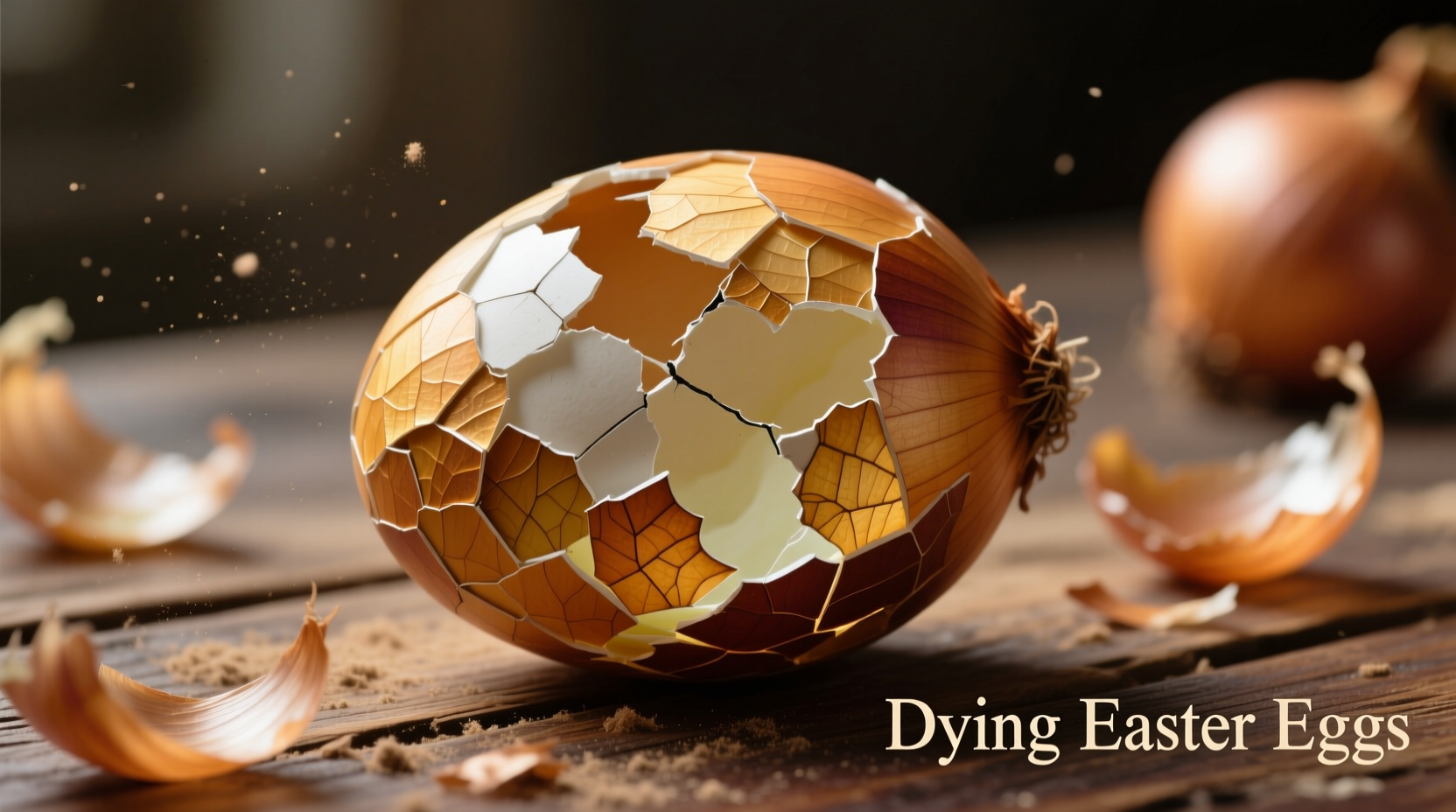Transform your Easter celebration with this centuries-old natural dyeing technique that turns kitchen scraps into stunning works of art. Onion skins contain quercetin, a natural pigment that bonds beautifully with eggshells, creating rich earthy tones ranging from pale gold to deep russet. Unlike commercial dyes filled with synthetic chemicals, this method produces edible, non-toxic eggs perfect for holiday traditions.
Why Choose Onion Skins for Easter Egg Dyeing?
Onion skins offer several advantages over store-bought dyes. They're completely free (using what would otherwise be composted), create unique variations impossible to replicate with artificial colors, and produce results that are safe to consume. The tannins in onion skins naturally adhere to calcium carbonate in eggshells, creating long-lasting color without harsh mordants beyond a small amount of vinegar.
| Onion Type | Color Result | Intensity Level |
|---|---|---|
| Yellow Onion Skins | Golden yellow to orange | Moderate |
| Red Onion Skins | Rust to deep burgundy | High |
| White Onion Skins | Pale yellow | Low |
| Mixed Onion Skins | Earthy terracotta | Variably rich |
Gathering Your Natural Dye Materials
Collect onion skins throughout the winter months and store them in a paper bag in your pantry—plastic traps moisture and causes mold. You'll need approximately two cups of dry skins for every batch of dye. Save skins from your regular cooking, or ask local grocery stores for their discarded onion skins (many will happily save them for you). The skins from about 20 medium onions typically yields enough for vibrant dye.
Step-by-Step Onion Skin Dye Process
Preparation Phase
Start with clean, white-shelled eggs for best results. Brown eggs will produce more muted, earthy tones. Gently wash eggs with mild soap and water, then dry thoroughly. Place eggs in a single layer in a saucepan and cover with cold water by one inch. Bring to a gentle boil, then reduce heat and simmer for 12 minutes. Immediately transfer to ice water to stop cooking. This method prevents green rings around yolks while creating perfectly hard-boiled eggs for dyeing.
Dye Creation Process
In a separate large pot, combine two cups of onion skins with four cups of water and two tablespoons of white vinegar. The vinegar helps the dye adhere to the eggshells. Bring to a simmer over medium heat and maintain for 30-45 minutes until the liquid achieves a rich color. Strain the liquid into a heatproof container, discarding the spent skins. For deeper colors, simmer the strained liquid an additional 15 minutes to reduce and concentrate the dye.

Dyeing Your Eggs
Carefully lower cooled eggs into the warm dye bath using a slotted spoon. For even coloring, gently stir eggs occasionally. For marbled effects, wrap eggs in cheesecloth with small leaves or flowers before submerging. The longer eggs soak, the richer the color—typically 30 minutes to 2 hours produces beautiful results. Remove eggs with a slotted spoon and place on a wire rack to dry completely. As they dry, the colors deepen and develop subtle variations.
Maximizing Color Intensity and Variation
Experiment with different techniques to create unique effects. Adding salt to the dye bath creates mottled patterns, while varying soak times produces beautiful ombré effects. For deeper reds, use exclusively red onion skins and extend simmering time to one hour. The historical dyeing tradition timeline shows that European folk artists in the 18th century discovered that adding iron water (from soaking rusty nails) creates dramatic gray and black tones.
Understanding Practical Limitations
While onion skin dyeing produces beautiful results, it has certain context boundaries. Unlike commercial dyes, you cannot achieve bright blues, greens, or purples with onion skins alone. The colors will always fall within the yellow-orange-brown spectrum. Additionally, natural dyes generally produce more variation between eggs, which creates charming uniqueness but lacks the uniformity of artificial dyes. For food safety, consume naturally dyed eggs within one week when refrigerated—natural dyes don't contain preservatives found in commercial products.
Preserving Your Naturally Dyed Eggs
Once dry, rub eggs lightly with vegetable oil to enhance sheen and protect the color. Store decorated eggs in the refrigerator in egg cartons, with each egg separated by paper. For decorative keepsakes, carefully blow out the contents through small holes at each end, then proceed with dyeing. These hollow eggs can be preserved indefinitely as ornaments. According to USDA food safety guidelines, hard-boiled eggs should not be left at room temperature for more than two hours.
Historical Significance of Natural Egg Dyeing
This technique connects us to ancient traditions across multiple cultures. Eastern European communities have used onion skins for centuries to create the distinctive red eggs of Orthodox Easter celebrations. In North America, early settlers adopted Native American natural dyeing methods when commercial dyes were unavailable. The Pennsylvania Dutch tradition of "kräme" involved intricate wax-resist designs using natural dyes including onion skins. These historical practices demonstrate humanity's long-standing relationship with plant-based colorants.
Troubleshooting Common Issues
If your colors appear pale, try increasing the onion skin to water ratio or extending the simmering time. For uneven coloring, ensure eggs are completely submerged and gently rotate them periodically. If dye isn't adhering well, check that your vinegar ratio is correct—too little prevents proper bonding, while too much can damage eggshells. For streaky results, make sure eggs are thoroughly cleaned and free of oil before dyeing. Remember that natural dyes work best on fresh eggs with clean shells.
Environmental and Safety Benefits
Choosing natural dye methods significantly reduces chemical runoff compared to commercial alternatives. Onion skin dyes are completely biodegradable and safe for children to handle. Unlike some commercial dyes that contain potentially harmful synthetic colorants, onion skins create edible-safe decorations. The University of Illinois Extension program confirms that naturally dyed eggs pose no additional food safety risks beyond standard hard-boiled eggs when properly handled and refrigerated.











 浙公网安备
33010002000092号
浙公网安备
33010002000092号 浙B2-20120091-4
浙B2-20120091-4